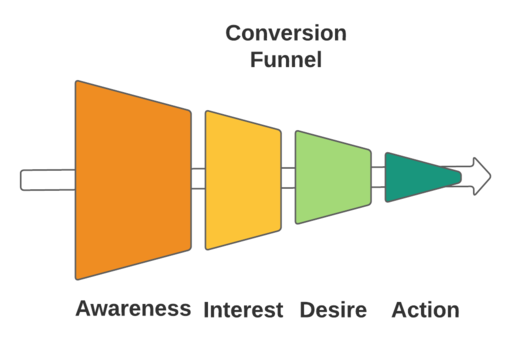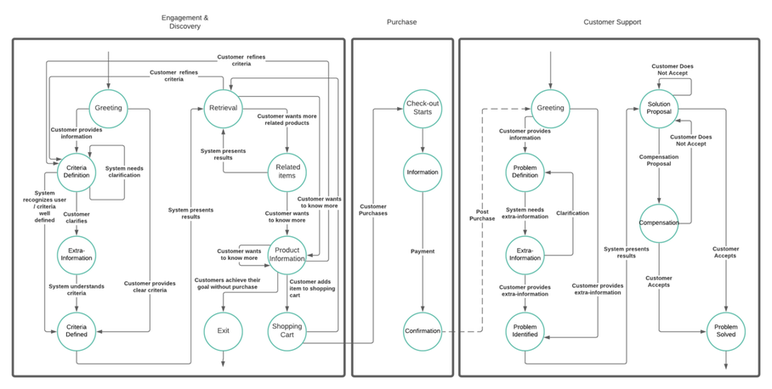Empowering our Customers
The positioning of FARFETCH’s brand will be empowered through the FARFETCH Chat R&D that will allow it to have closer and faster interactions on the point of purchase and, therefore, elevate the service level on an increasingly on-demand market where the customer requires immediate answers to their needs.
FARFETCH aims to: (1) customize the service to each client, tailoring it to its needs; (2) increase the CR of all the potential clients that visit the platform bringing more revenue to all the parties involved in the sale, FARFETCH and its partners; (3) increase online penetration in the high-end market, by decreasing some of the barriers that characterize the online purchase, therefore convincing the more conservative audience; (4) enter new geographical markets and increase the penetration in markets in high demand such as the emerging markets; and finally (5) improve the efficiency and the quality of the company in terms of its customer service (CS) response rate and backlog rate.
With FARFETCH Chat R&D, we will empower the brand by providing advice and acting as an influencer shaping the purchase journey by narrating to the customer the brand’s origins (storytelling: how to style this piece, who the designer is, what the values of the brand are), product relationships and providing an intersection of conversational apps with shopping that is so keen for younger generations.
Purchase Journey for Luxury Commerce
Purchase Journey is when the customer navigates through an e-commerce site most likely to buy apparel. For this, the customer will go down a shopping funnel that encompasses in a very coarse fashion the following stages (see figure below):

Figure: Traditional e-commerce funnel. The customer is aware of the shopping brand (in this case, FARFETCH.com or one of its relative brands) and navigates through the catalogue until the purchase.
On each of the stages mentioned in the figure above, a customer can go explore the catalogue on different levels. Putting in practical terms, through dialogue, one customer can inquire about the brand, the product, manifest interest or eventually mention the intent like shopping for someone else. Once that appetite is satisfied, the customer will follow with the purchase. Let’s analyse the former.
One core component for any e-commerce business, specifically fashion, is inspiration. By uncovering customer patterns circling novelty, discoverability and surprise, one can maintain the appetite for purchases. This is key to engage, retain and increase our customer base.
During the navigation, customers can feel frustrated when not finding the product that they were looking for. Like finding a needle in a haystack, navigating in a sea of information can be a daunting and overwhelming chore. More specifically, searching for the right apparel in a catalogue of millions of products, consisting of several thousands of categories with hundreds of attributes will lead to a premature abandonment and increased costs (like the cost of acquisition).
The question is how can we, through dialogue, enhance customer’s intent discovery and help the efficient decision on the agent dialogue actions (see Scientific Objective (SO) 2). Even though traditionally most of the contacts are related to campaigns, below follows an overview of other possible scenarios that we need to address:
Brand/Category Related Questions
-
Searching for items
- The customer is looking for garments of a specific category or brand;
- Our customers are searching for garments within a price range or items of clothing only sold by FARFETCH.
-
Browsing and discovering
- Customers are also looking for inspiration, or;
- Will browse novel apparel.
Customers tasks encompass dialogues such as:
-
Searching
- Hi, I am looking for a dress that I have seen at this year’s Paris fashion week. Can you help me?
-
Browsing and discovering
- Hi, what are the trending brands with a casual look?
Scenarios mentioned above usually do not end up with purchase as the customers are more interested in surfacing and getting acquainted with the catalogue. However, customers usually return and eventually finalise the interaction with the marketplace with a purchase based on previous interactions. When then happens, the following two scenarios result:
Brand/Category Related Questions
In a situation where a customer is looking for a product, usually it starts by identifying key brands or categories that he is interested in. These informative aspects are crucial to initiate a collaborative process towards narrowing down the product search space. Here are some examples of typical starting conversations that happen with our customers:
- Hi, my brother is getting married next week and I need help finding the perfect dress. It will be a beach wedding and I was thinking about something light and floral;
- Hi, I’ll be traveling next week and I am searching for comfy activewear to wear on the plane;
- Hi, I am searching for some stylish comfy shoes I could wear at work without getting tired.
For someone else
Related situations happen when our customers are searching for a product to offer to a relative. Usually, the conversations start with an idea in mind (type of product, brand, occasion).
- Hi, next week is my wedding anniversary and I need help finding a nice gift for my wife. Her style is very minimal and she loves Stella McCartney, can you help me find something?
From the above, it is clear that our customers have a purpose when engaging with our system in a purchase goal-oriented task. However, and it naturally happens with any human conversation, much of these starting points go through different steps in the dialogue.
The multi-turn nature of a conversation allows us to explore different realities. Although stimulating, it is important to map how those interactions flow in the dialogue.
Business Cases and E-Commerce Funnel
A customer journey is structured around different stages of the purchase funnel. We identify some of those as follows:
- Onboarding of new or returning customers
- Navigation on the product catalogue
- And, order placement
For each of the granular steps of the aforementioned funnel, it requires the following business components:
- Marketing funnel
- Recommendations
- And, Checkout
Next Figure depicts the different stages of the conversation coupled with a description of what can make the customer and/or system transition to another stage of the dialogue. But first, we will introduce another use case that is strongly tied with this one.

Customer Support
When scaling FARFETCH business, one must continue to provide the same high-end quality of customer service (CS) as it happens on pre-order stages like we have seen in the previous section. We should stress that the customer journey does not end with the purchase of apparel. It is vital to retain and continue to expand our customer base.
Then, the question surges on how to continue to provide the same touch and feel to luxury clientele by giving the mandatory glamour associated with high-end apparel in a post-purchase environment. Highly trained CS staff is key for this area of the business. Even though traditionally most of the contacts are related to complaints, below follows an overview of other possible scenarios that we need to address:
-
Customer wishing to return items because:
- There is a defect on the apparel that was purchased;
- The item does not fit to customer size and erroneous product labeling related with size;
- The item does not match the one shown in the website (photo);
- Apparel does not match with customer intent.
-
Contacts related with order:
- Status of the order (e.g., packaging, in transit);
- Information about the delivery (e.g., when and where it is going to be delivered and by who).
-
General queries regarding product catalogue:
- Confirm that order matches received product;
- Ask for opinion regarding brands and what type of products are suitable for special occasions.
-
Order related queries:
- Purchase of items for oneself or for someone else.
It is important to stress that functional scalability is of paramount importance specifically for high-sale seasons like Black Friday when there is a significant increase of demand at a CS level. The multi-turn nature, which also happens on our CS teams, allows conversations to take different directions. Although stimulating, it is important to map how those interactions flow in the dialogue to provide a clear sense on the stages which will be needed on an autonomous conversational AI system.
As part of the purchase funnel and how conversations can flow, Figure above depicts the different stages of the conversation coupled with a description of what can make the customer and/or system transition to another stage of the dialogue.
Business Cases and E-Commerce Funnel
Customer services supports the following cases:
- Engagement of the customer problem;
- Information regarding our product catalogue;
- And, order placement.
For each of the granular steps of the aforementioned funnel, it requires the following business components:
- Marketing (promotional campaigns, exclusive offers);
- Recommendations;
- And, order management.
Private Clients Early Access
FARFETCH is keen on delivering an exclusive shopping experience to its clients. In particular, it is pivotal to show potential high-value customers the luxury experience offered by FARFETCH to increase loyalty and improve the customer base.
With that, one provides tools to reward a loyal customer base by giving them a service where they feel appreciated and more aware of benefits like exclusive offers.
In a nutshell:
- Ensure Private Clients feel recognized and valued when they browse with us;
- Make it easier for Private Clients to communicate with their Stylist by enabling them to connect over channels they currently use and love.
To support our customers throughout their journey and allow them to access a reliable set of products that most resembles their tastes, one surveys their preferences such as:
- Designers that the customer is more interested in based on their style;
- Fashion colour, based not only on yearly trend reports but as well as customer usage frequency;
- Information regarding sizes and fitting styles.
Store of the Future
FARFETCH Chat R&D has the vision to empower the staff in the store. As new products are added to the inventory on a weekly basis it is a daunting task for the staff to be up to date with current trends. As described next, a couple of challenges are faced daily by the boutique staff:
- What are the new garments and from which brands?
- Which details are more relevant for the products, which brands/designers are emerging and for which seasons?
- I would like to make a styling appointment. Are you available next Monday?
Given that the staff is a key representative of the brands in the store, the focus gravitates around the customer. Having in mind the importance of building a strong connection with the clientele around the garments in the store, it is paramount to provide the tools when that is not possible. In this specific situation, a sales associate keeps cohesion of the customer journey while navigating through the product catalogue in the boutique. In that case, it can provide assistance to a multitude of tasks, such as:
- General queries regarding product catalogue:
- Requesting more details about the apparel and getting acquainted with the brand;
- Ask for opinion regarding brands and what type of products are suitable for special occasions.